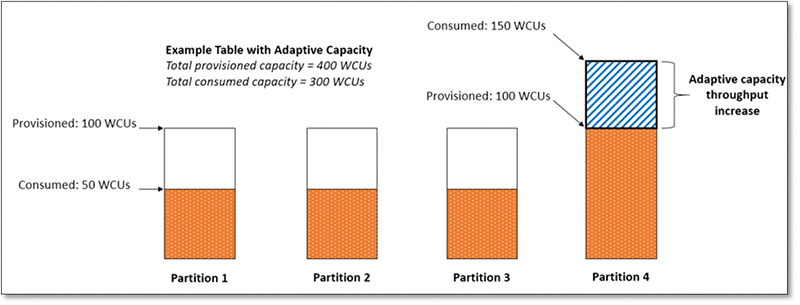AWS Database Blog
Tag: Amazon DynamoDB
Migrate Apache Cassandra databases to Amazon DynamoDB more easily
Customers tell us that migrating data between different database engines—also known as a heterogeneous migration—can be challenging and time consuming. Some customers such as Samsung had to figure out on their own how to migrate their Apache Cassandra databases to Amazon DynamoDB (see Moving a Galaxy into the Cloud: Best Practices from Samsung on Migrating […]
How Amazon DynamoDB adaptive capacity accommodates uneven data access patterns (or, why what you know about DynamoDB might be outdated)
May 24, 2019, update: Amazon DynamoDB adaptive capacity is now instant, instead of having a 5–30 minute reaction time. Instant adaptive capacity is now on by default for all DynamoDB tables and global secondary indexes. Amazon DynamoDB is a nonrelational database with high performance at any scale. It is a fully managed service that […]
How to perform ordered data replication between applications by using Amazon DynamoDB Streams
AWS customers use Amazon DynamoDB to store mission-critical data. These customers’ applications make millions of requests per second to individual DynamoDB tables that contain hundreds of terabytes of items. They count on DynamoDB to return results in single-digit milliseconds. In many cases, these applications have requirements to notify other systems and users about specific transactions, […]
How to create a fast and globally available user profiling system by using Amazon DynamoDB global tables
A user profiling system is a system that stores users’ names, IDs, contact information, past behaviors, interests, and other information. Such a system also provides methods to query that user information. In this post, I explain the importance of a globalized user profiling system, how to create this system using Amazon DynamoDB global tables, and […]
Z-order indexing for multifaceted queries in Amazon DynamoDB: Part 2
In a previous AWS Database Blog post, I introduced Z-order indexing, a way in which you can sort your data to efficiently query an Amazon DynamoDB table by using range bounds on multiple attributes. In this post, we explore the process of creating a schema for your index. We look at how to decide which […]
A serverless solution to monitor the storage of your Amazon DynamoDB tables
If you use Amazon DynamoDB as your application’s NoSQL database service, you might want to track how much storage your DynamoDB tables are using. DynamoDB publishes its service metrics to Amazon CloudWatch. CloudWatch helps you monitor and analyze those metrics, set alarms, and react automatically to changes in your AWS resources. Currently, DynamoDB sends many […]
How to perform advanced analytics and build visualizations of your Amazon DynamoDB data by using Amazon Athena
You can reap huge analytical value from billions of items and millions of requests per second in your Amazon DynamoDB service. However, you need to export your data in order to get that analytical value. Copying the data from a DynamoDB table to an analytics platform allows you to extract rich insights. In order to […]
How to use AWS CloudFormation to configure auto scaling for Amazon DynamoDB tables and indexes
A best practice for the deployment of AWS resources is to use a configuration system that treats your infrastructure as code. Infrastructure as code is a key enabler of DevOps practices, which bring developers and operations together to collaborate on automating application delivery at scale. By modeling your entire infrastructure as code in AWS CloudFormation […]
AWS re:Invent 2017 Roundup: All Amazon DynamoDB-Related Sessions for Your On-Demand Viewing
Though AWS re:Invent 2017 concluded two months ago, we still wanted to round up and share all the excellent Amazon DynamoDB session content from the conference. The following table includes the titles of DynamoDB-related sessions and links to the session recordings, session descriptions, and an explanation of whom each session is best for. AWS re:Invent […]
Performing a Live Migration from a MongoDB Cluster to Amazon DynamoDB
Migrating data from one database to other can be quite challenging with respect to data consistency, downtime of applications, and key design differences between the target and source databases. AWS Data Migration Service (AWS DMS) helps you migrate databases like MongoDB, Oracle, MySQL, and Microsoft SQL Server to AWS quickly, securely, and seamlessly. The source […]









